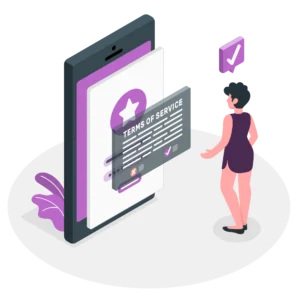
The Ultimate First-Timer’s Guide to Mobile App Development: A Step-by-Step Journey
Embarking on the journey of mobile app development can be both exhilarating and daunting for beginners. This comprehensive guide is designed to demystify the process and provide a roadmap for first-timers venturing into the realm of app creation.
1. Understanding the Basics:
a. Define Your Idea:
Begin by defining your app idea. Identify its purpose, target audience, unique selling points, and the problem it aims to solve. Clear and well-defined objectives form the foundation of a successful app.
b. Choose the Right Platform:
Decide whether your app will be for iOS, Android, or both (cross-platform). Each platform has its own programming languages (Swift for iOS, Java/Kotlin for Android), so choose based on your target audience and app requirements.
2. Planning and Research:
a. Market Research:
Conduct thorough market research to understand your competition, user preferences, and market trends. Identify gaps in existing apps to carve your niche.
b. Wireframing and Prototyping:
Create wireframes or prototypes to visualize your app’s layout, features, and user flow. Tools like Sketch, Adobe XD, or Figma help in creating mockups.
3. Development Phase:
a. Learn or Hire Development Expertise:
Depending on your skillset, either learn app development using online resources and tutorials (languages like Swift, Java, Kotlin, React Native, or Flutter) or hire a development team/developer.
b. Choose Development Approach:
Decide between native (specific to each platform) or cross-platform development (using frameworks like React Native or Flutter) based on your project needs, budget, and time constraints.
4. Testing and Refinement:
a. Testing Your App:
Thoroughly test your app for bugs, usability issues, and compatibility across different devices. Beta testing with a small group of users can provide valuable feedback.
b. Refinement and Iteration:
Based on user feedback and testing results, refine your app’s features, UI/UX, and performance. Continuous iteration is crucial for a polished final product.
5. Deployment and Launch:
a. App Store Guidelines:
Follow the guidelines provided by Apple App Store or Google Play Store for submission. Prepare necessary assets like app description, icons, and screenshots.
b. Marketing and Promotion:
Prepare a marketing strategy to create buzz around your app’s launch. Utilize social media, app store optimization (ASO), and other marketing channels to reach your audience.
6. Post-Launch:
a. Monitor and Analyze:
After the launch, monitor app performance using analytics tools. Track user engagement, retention rates, and user feedback to make informed updates and improvements.
b. Continuous Improvement:
Update your app regularly based on user feedback, technology advancements, and changing market demands. Aim for a seamless user experience.
Conclusion:
Embarking on your first mobile app development journey requires dedication, perseverance, and a keen eye for detail. By following these steps and continuously learning from the process, you’ll pave the way for a successful app venture.
In essence, the first-timer’s guide to mobile app development is about embracing the learning curve, staying adaptable, and translating your innovative ideas into tangible digital solutions.
